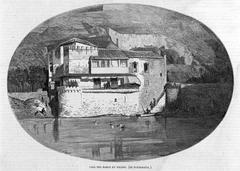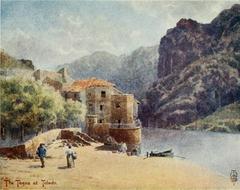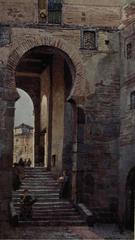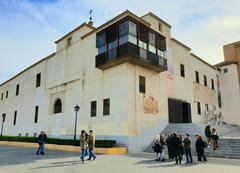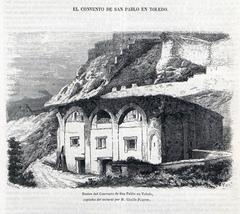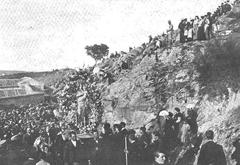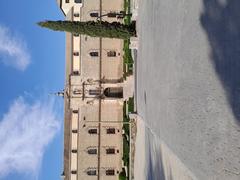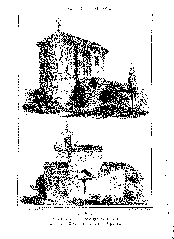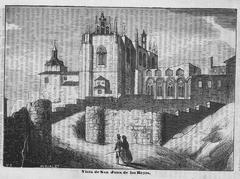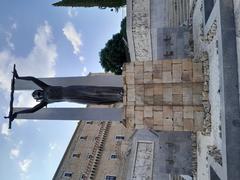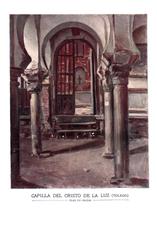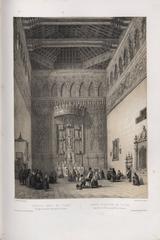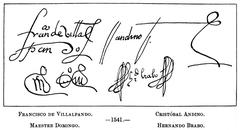
Casa del Diamantista Toledo: Visiting Hours, Tickets, and Historical Site Guide
Date: 14/06/2025
Introduction
Nestled in the heart of historic Toledo, Spain, the Casa del Diamantista (“House of the Diamond Cutter”) is a remarkable testament to the city’s rich artisanal legacy and multicultural past. Famed for its unique fusion of Renaissance and Mudéjar architecture, the Casa del Diamantista embodies centuries of craftsmanship in jewelry, metalwork, and sword-making. Its origins trace back to the late 15th or early 16th century, with subsequent transformations reflecting the evolving history and culture of Toledo. Today, after significant restoration efforts, it stands as a vibrant cultural hub, museum, and interpretation center—inviting visitors to experience Toledo’s living heritage (catedraldetoledo.es; travelabc.org; cadenaser.com; toledo.es).
This guide provides a detailed overview of the Casa del Diamantista’s history, architectural and artistic highlights, restoration progress, practical visitor information, and tips for an enriching visit to one of Toledo’s most treasured historical sites.
Table of Contents
- Origins and Early History
- Evolution Through the Centuries
- Restoration and Cultural Renaissance
- Architectural and Artistic Significance
- The Museum and Cultural Center Today
- Visiting Hours, Tickets, and Accessibility
- Travel Tips and Nearby Attractions
- The Art of Sword-Making and Damascening
- Restoration Philosophy and Current Status
- FAQs
- Recommendations for Visitors
- Summary and Call to Action
- References
Origins and Early History
The Casa del Diamantista was built in the late 15th or early 16th century for Damián Villalobos, a renowned diamond merchant reputed to have brought his expertise and fortune from India. Conceived as his private residence and workshop, the house’s design and decoration reflected both Villalobos’s status and Toledo’s prosperity during the Renaissance (catedraldetoledo.es).
The building showcases an arresting blend of Renaissance and Mudéjar styles, visible in its geometric façades, brick and tile work, and decorative diamond-shaped motifs—subtle references to both the owner’s trade and the multicultural environment where Christian, Jewish, and Muslim traditions coexisted.
Evolution Through the Centuries
After Villalobos, the property passed through several affluent families, each contributing to its evolving architecture and function. By the 19th century, the house had become the property of the Ayuntamiento de Toledo (City Council), which recognized its historical value and began transforming it into a public space dedicated to the city’s artisanal legacy (catedraldetoledo.es).
In the early 20th century, the Casa del Diamantista became the original home of the Museo del Greco, further solidifying its status as a cultural landmark.
Restoration and Cultural Renaissance
A major restoration was undertaken in the 1980s to preserve the house’s historical integrity while adapting it for use as a museum and cultural center. Mudéjar brickwork, Renaissance arches, and diamond motifs were meticulously conserved; accessibility and visitor amenities were introduced to welcome a wider audience (catedraldetoledo.es).
Ongoing and recent restoration efforts, led by architect Gonzalo Abella and funded by the Confederación Hidrográfica del Tajo (CHT), are focused on addressing structural issues, improving accessibility, and transforming the site into the Centro de Interpretación del Tajo (Interpretation Center of the Tagus River), with a new glass skylight, modern amenities, and a scenic terrace (Covertalavera; Cadena SER; toledo.es).
Architectural and Artistic Significance
Casa del Diamantista is a prime example of Toledo’s rich artistic tradition. Its façade is adorned with diamond-shaped decorations and an interplay of Renaissance and Mudéjar elements. Inside, period furnishings, original tilework, and restored wooden ceilings immerse visitors in the ambiance of a prosperous artisan’s home.
The building’s riverside location allowed artisans access to water for forging and tempering steel, connecting the house to Toledo’s legendary craftsmanship in sword-making and damascening (travelabc.org). The Mudéjar tradition—characterized by brickwork, ornamental tiles, and horseshoe arches—reflects the city’s blend of Christian, Jewish, and Muslim influences.
The Museum and Cultural Center Today
Casa del Diamantista operates as a dynamic museum and cultural venue, hosting exhibitions, concerts, lectures, and workshops that celebrate Toledo’s artisanal legacy. The museum’s collections include jewelry, gemstones, historic weaponry, and tools, illustrating the city’s centuries-old expertise in the diamond trade, sword-making, and damascening (catedraldetoledo.es). Visitors can watch master artisans at work and even participate in hands-on workshops.
Visiting Hours, Tickets, and Accessibility
- Location: Paseo del Barco del Pasaje, on the Tagus Riverbank, easily accessible from the city center.
- Visiting Hours: Tuesday–Sunday, 10:00 AM–6:00 PM (last admission 5:30 PM). Closed Mondays and public holidays. Hours may vary by season—check the official website for updates.
- Tickets: Standard admission is €5–8, with discounts for students, seniors, and children. Children under 12 typically enter free.
- Guided Tours: Available in multiple languages. Advance booking is recommended.
- Workshops: Hands-on experiences in damascening and sword decoration may be booked for an additional fee.
- Accessibility: The site is wheelchair accessible, with ramps and elevators; some historic areas may have limited access.
Travel Tips and Nearby Attractions
- Nearby Sites: The Toledo Cathedral, Alcázar, Museo del Greco, and the neighborhoods of Santa Cruz and San Miguel are within walking distance.
- Best Times to Visit: Early mornings or late afternoons offer softer light and fewer crowds.
- Photography: The terrace and gardens provide excellent views of Toledo’s skyline and the Tagus River—ideal for photographers.
- Local Crafts: Explore artisan shops nearby for damascene jewelry, swords, and ceramics.
- Refreshments: Enjoy local cuisine at riverside cafés and restaurants.
The Art of Sword-Making and Damascening
Toledo’s reputation for superior metallurgy is embodied in the Casa del Diamantista. Visitors can observe the forging and decoration of swords—a tradition dating back to Roman times and refined across Visigothic, Moorish, and Christian eras. Damascening, the inlaying of gold and silver into steel, is also demonstrated, reflecting the multicultural roots of Toledo’s crafts (travelabc.org).
Restoration Philosophy and Current Status
The latest restoration project, initiated in 2023, is designed to balance heritage preservation with modern functionality. Plans include a glass skylight over the central patio, energy-efficient updates, an elevator, and new cultural spaces such as the Tagus River interpretation center and a terrace café. Archaeological research will further enrich the visitor experience (Covertalavera; Cadena SER; toledo.es).
As of June 2025, restoration works have been delayed, and the site remains closed. Updates on opening dates and visitor information will be available on the City of Toledo website.
Frequently Asked Questions (FAQ)
What are the Casa del Diamantista visiting hours?
Tuesday–Sunday, 10:00 AM–6:00 PM (last admission 5:30 PM). Closed Mondays and public holidays. Confirm on the official website for current hours.
How much are tickets?
General admission is €5–8; discounts apply for students, seniors, and children. Some workshops may require additional fees.
Are guided tours available?
Yes, in multiple languages. Advance booking is recommended.
Is the site accessible?
Yes, with ramps, elevators, and adapted facilities for reduced mobility.
When will the Casa del Diamantista reopen?
The opening date is pending due to restoration delays. Monitor the official site for updates.
Recommendations for Visitors
- Engage with Artisans: Speak with craftsmen for insights into Toledo’s traditions.
- Take Advantage of Guided Tours: Gain a deeper understanding of the house’s history and the city’s artisanal legacy.
- Plan Ahead: Book tickets and workshops in advance, especially during peak seasons.
- Combine Your Visit: Explore nearby historical sites and artisan shops for a comprehensive Toledo experience.
- Photography: Capture the panoramic views from the terrace, especially at sunset.
Summary and Call to Action
The Casa del Diamantista stands as a living symbol of Toledo’s artisanal mastery and multicultural legacy. Its blend of Renaissance and Mudéjar architecture, storied history in jewelry and weaponry, and ongoing restoration make it a must-visit destination for anyone seeking an authentic cultural experience in Toledo (catedraldetoledo.es; spainlesstraveled.com; travelabc.org). By visiting, you support the preservation of Toledo’s intangible heritage and become part of the city’s continuing story of artistic excellence.
Stay updated on restoration progress, opening details, and special events via the official Casa del Diamantista website, the City of Toledo tourism portal, and the Audiala app. Don’t miss the opportunity to immerse yourself in the vibrant culture and craftsmanship that make Toledo a UNESCO World Heritage city.
References
- Casa del Diamantista in Toledo: Visiting Hours, Tickets, and History of This Iconic Historical Site (catedraldetoledo.es)
- Guide to Toledo in 2023: Casa del Diamantista (travelabc.org)
- Restoration Progress, Visiting Hours, Tickets, and Cultural Highlights (Covertalavera; Cadena SER; toledo.es)
- Casa del Diamantista Visiting Hours, Tickets, and Essential Guide (spainlesstraveled.com; thetourguy.com)
